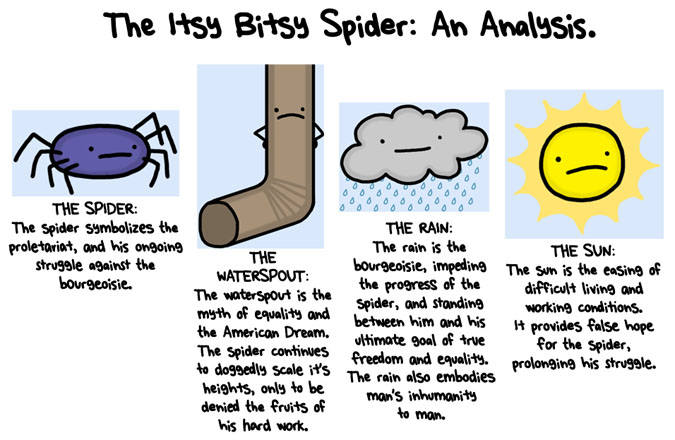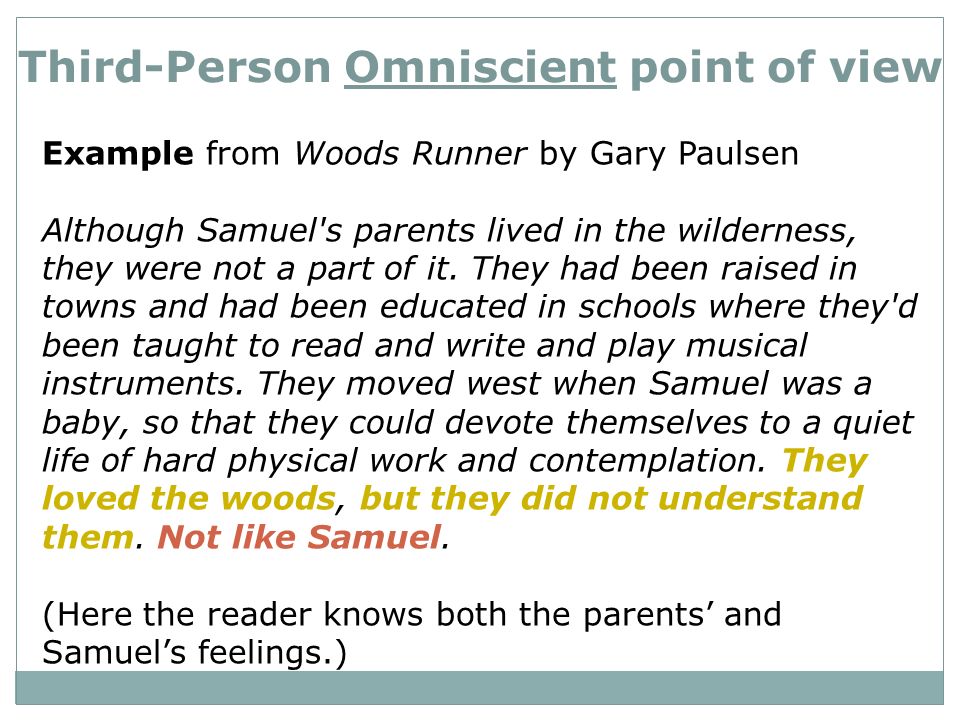Ive seen all sorts of definitions and advice for point of view (POV)some great, some contradictory, and some unusual. Terms have old names, new names, confusing names. This post is our definitive point of view guide, going over first person vs third person limited vs third person omniscient, and the major pitfalls of each. Point of view is very closely linked with the concept of a narrator. The narrator of a story can be a participant in the story, meaning this character is. A firstperson narrative is a mode of storytelling in which a narrator relays events from their own point of view using the first person i. It may be narrated by a first person protagonist (or other focal character), first person reteller, first person witness, or first person peripheral (also called a peripheral narrator). A classic example of a first person protagonist. Point of view is the manner in which a story is narrated or depicted and who it is that tells the story. Simply put, the point of view determines the angle and perception of the story unfolding, and thus influences the tone in which the story takes place. Choosing the right point of view for a work of fiction is, in my opinion, the most important decision a writer makes beside choosing the protagonist. It not only dictates what pronouns to use, and how much of the protagonists thoughts the reader gets to see, but also determines the distance. Check out some books by your tutor Fiona Veitch Smith (click on the book covers to find out more) This is the third installment in our free online creative writing course. In this session we will look at how choosing a point of view can affect your writing. The term point of view has many applications, from video game development to the interpretation of art. This page will discuss point of view as it pertains to the study of reading and literature. When studying the perspective of the narrator, the reader is concerned with the relationship between the person telling the story (the narrator) and the agents referred to. Writing the Intimate Character: Create Unique, Compelling Characters Through Mastery of Point of View [Jordan Rosenfeld on Amazon. FREE shipping on qualifying offers. Craft Vibrant Characters and an Intimate Reading Experience The key to excellent fiction lies in its characters: the unforgettable protagonists Students are often required to identify the narrators point of view on reading standardized tests. This page will show you an effective way of teaching students how to identify the narrators view point. Writers dont only have to decide which characters point of view the story will be told in, they also have to figure out whether to then share that characters narrative in firstperson, thirdperson, secondperson, or (cue ominous rumbling) omniscient POV. Authors dont speak to us directly in literary works. They use an intermediary device called a narrator. Narrative point of view is the perspective of that narrator. First person narrative point of view occurs when the narrator is telling the story. Call me Ismael, the first line of Melville. The thirdperson omniscient point of view is generally the most objective and trustworthy viewpoint because an allknowing narrator is telling the story. This is the third of three articles in a series on point of view. See Point of View, the Full Story for the introduction and Part Two, First, Second, and Thirdperson POVs. In this article well focus on the specifics of the omniscient point of view. Point of view is among the least understood craft challenges but, along with the related question of narrative distance, it is perhaps the most powerful in effecting. The First Person Point of View. You can easily identify the first person point of view by the use of I, me, and myself in the narrative. The first person narrator relates the story as its happening, or retells a story that happened in the past. Narrative point of view or narrative perspective describes the position of the narrator, that is, the character of the storyteller, in relation to the story being told. It can be thought of as a camera mounted on the narrator's shoulder that can also look back inside the narrator's mind. Literary Devices refers to the typical structures used by writers in their works to convey his or her messages in a simple manner to the readers. When employed properly, the different literary devices help readers to appreciate, interpret and analyze a literary work. Below is a list of literary devices with detailed definition and examples. The thirdperson omniscient point of view is a method of storytelling in which the narrator knows the thoughts and feelings of all of the characters in the story. The thirdperson is not the same as the thirdperson limited, a point of voice that adheres closely to one. a specified or stated manner of consideration or appraisal; standpoint: from the point of view of a doctor. an opinion, attitude, or judgment: He refuses to change his point of view in the matter. the position of the narrator in relation to the story, as indicated by the narrator's outlook from.











